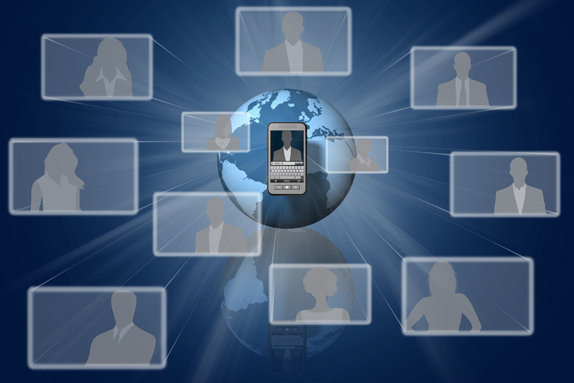As video conferencing becomes more and more common, I thought it might be useful to talk about how to best configure your computer for doing video chats.
Audio Is King
The most important part of a video conference is not the video…it is the audio. This may seem unintuitive, but there have been some experiments done where people were asked to rate the quality of short videos. The videos that had good audio were consistently rated better than the ones with poor audio–regardless of the quality of the visuals. We are programmed to skip over blips and problems with video, but audio issues stand out.
Make sure you have a good headset microphone and that your connection is fast enough not to drop parts of the audio. If you can’t trust the audio, do your video conferences with the computer muted, volume turned down, and just use the telephone for the audio side of things.
The More Light, The Better
Very few offices are lit well enough to make video look good. The little video camera in your computer will almost always do better with more light. I have two 50 watt CFL lights facing my desk that I turn on when I do a video conference. This is about the amount of light you’d get from three 100 watt incandescent light bulbs, so they are very bright and make a huge difference in the quality of the image.
Pay Attention To The Background
Clean up whatever is behind you or shift the camera so it is facing something that makes a better background. I used to have a large urn behind my desk and I noticed whenever I had to step away and people thought I wasn’t listening, everyone would start talking about the urn. I can imagine how the conversations would have gone if I had a mess or a pile of trash behind my desk. The video conference gives people a look into your world. Make sure you present a scene that doesn’t undermine your business goals for the conversation.
Also, try to make sure the background isn’t brighter than your face. Most inexpensive cameras will compensate for the background and underexpose the most important part–you.
Use A Good Camera
The small camera built into your laptop may not be the best camera to use for video conferencing. I use a two- or three-year-old camcorder. It has a much larger sensor, so it works better under lower lighting levels and it also allows me to white balance so my skin doesn’t look blue because of the color of my office lighting.
Another nice thing about using an external camera is that you can zoom in to focus on your face and less on your background. The remote that many camcorders come with is great for this.
Look Into Their Eyes
When you are video conferencing, be very conscious of where you are looking and try to make eye contact with the people on the other end. Often this means looking into the camera instead of at their picture. If you can position the camera so it is as close as possible to the video of the people on the other end, this will help. If your video conferencing tool lets you do a freeze frame, it is helpful to experiment and see how you appear to people on the other end when your eyes are focused on different parts of the screen.
Do you do much video conferencing? If so, do you have any tips for making these types of meetings more effective?

Thanks. Any specific recommendations for “a good headset microphone”?
This is one that I’ve used before and really liked.
Great tips, Mark! And I agree with you about the importance of audio – even with a simple Skype call, not being able to hear what the other person is saying is a lot more frustrating than having problems with the video.
Thanks for the list of tips, these can apply to any sort of video conference.
Have the camera at eye level.
It works against you to be seen looking downwards at the camera, such as a webcam on laptop.
Stack a couple large books under whatever you have.